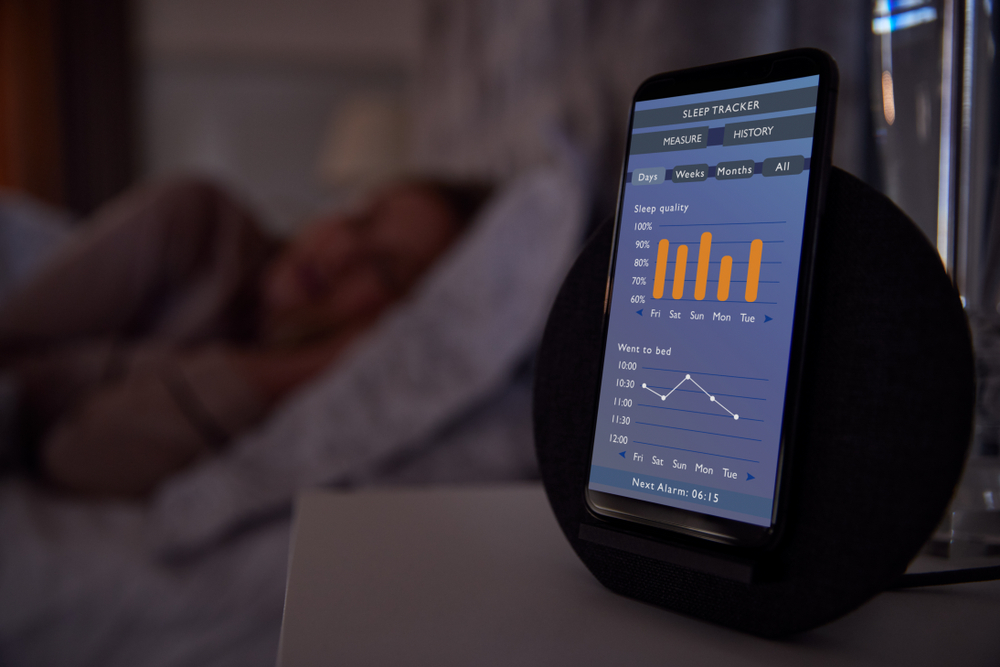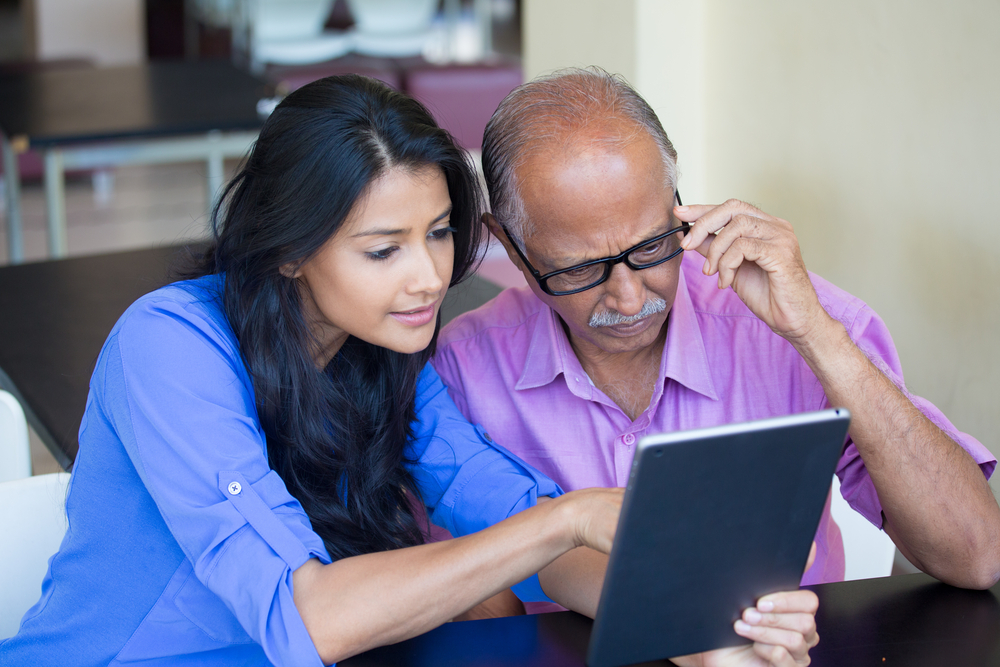
There’s no doubt that we’re in a technological age. There are now devices and tools for nearly every situation imaginable, including continuous glucose monitors, GPS tracking tools, telehealth systems, and more.
The benefits of tech come as no surprise to people who grew up with such tools, but what are the benefits of technology for aging parents? How can such tools help seniors? What do they mean for adult children who are now caregivers for their parents?
Benefits of Technology for Aging Parents
Allows Older Adults to Age Safely in Their Homes
Technology has made it possible for seniors to receive better healthcare without the need to leave their homes. Telemedicine and remote monitoring services allow doctors and nurses to provide care virtually, reducing the need for frequent visits to the hospital or clinic.
Wearable health devices, like fitness trackers and smartwatches are also relevant for such tasks. They can track vital signs, then alert seniors and their caregivers to potential health issues, allowing for early intervention and treatment.
Such approaches help seniors stay healthy and mean that any issues are quickly detected. As a result, it becomes much easier and safer for the seniors to remain at home.
Indeed, the right combination of technology and tools could help the senior stay at home for years more than they could otherwise.
Helping seniors to age at home is a powerful outcome, as more than 90% of older adults hope to age at home rather than an assisted living facility. It’s easy to see why too, as the home provides an important sense of comfort and familiarity.
Increases Independence

Technology also increases independence by helping older adults complete tasks they’d otherwise need assistance for. Mobility aids are especially powerful here and can dramatically improve a senior’s ability to get around. For example, specially designed chairs can use the armrest to move the person from a seated to a standing position to reduce the risk of falling.
Medication management tools are relevant too. These can remind seniors to take their medication and even help them determine the right medication – with little assistance from their caregiver.
Apps are another important area. Some provide seniors with social connection through video calling or messaging, allowing them to stay in contact with friends and family from a distance.
Apps can be used to solve particular challenges as well, such as ordering food or setting up transport through Uber.
Improved Safety and Security
Smart home devices, like motion sensors and smart locks, can help seniors feel safer in their homes. Emergency response systems can also help. For example, medical alert devices and fall detection sensors can provide quick assistance in case of an emergency. This can give peace of mind to both seniors and their families.
Improved Communication and Socialization
Technology has made it easier for the elderly to stay connected with their loved ones. That is a great way to reduce feelings of isolation and loneliness.
For example, video conferencing and messaging apps allow seniors to communicate with family members and friends who live far away.
Also, social media and some online communities provide new opportunities for seniors to connect with like-minded people who share their hobbies and interests.
Improved Sleep

One of the most significant challenges for the elderly is getting a good night’s sleep. But thankfully, technology has made this aspect of their lives a lot easier. Adjustable beds for seniors are one excellent way to help with their sleep. These beds can adjust to the individual needs of all seniors and provide the support and comfort they need.
Technology that improves health can indirectly help with sleep as well. For example, medication management apps help seniors to take their medications on time without missing doses. Doing so decreases the risk of adverse effects and can improve health – often leading to better sleep.
Some seniors may also benefit from CPAP machines to help them breathe during the night. There are also sleep apps that can help you track how the senior sleeps during the night and identify whether there are any issues.
How Technology Helps Caregivers
Promotes Peace of Mind
For both older adults and their caregivers, technology offers peace of mind.
For example, remote health monitoring and fall detection methods can provide real-time updates on the health and safety of older adults, allowing caregivers to intervene promptly in case of emergencies. GPS monitoring devices mean that seniors with dementia can be easily found if they wander.
This constant connectivity and reassurance alleviate anxiety and stress, ensuring that older adults receive the necessary care and attention when needed.
Saves Time
Technology can also save caregivers a lot of time. This is partly because the technology helps the senior to be independent, so they can do more for themselves.
Technology often improves efficiency as well. For example, a continuous glucose monitoring system allows the caregiver to track the senior’s glucose level without taking manual measurements.
Monitoring technology is powerful too, as the caregiver can see how the senior is doing from a distance. This is perfect for remote caregivers and means that visits can be well-timed and optimized.
Saves Money on At-Home Help
Traditional at-home care can be expensive, especially when round-the-clock assistance is required. Technology offers cost-effective alternatives by reducing the need for constant human presence.
With the aid of advanced mobility aids, remote health monitoring, and medication tracking systems, older adults can minimize the need for in-person caregivers, resulting in significant cost savings over time.
Challenges of Technology for Aging Parents

While technology has the potential to greatly improve elderly care, it also presents some challenges that must be addressed to ensure its effectiveness and accessibility. Here are some of the key challenges of technology in elderly care and how to work around these issues:
Limited Access and Affordability
Not all seniors have access to the latest technology, and some of them just can’t afford to buy it. Others may not have the necessary equipment or internet connection, and may not have the financial resources to invest in expensive devices.
This can create a digital divide, where only a certain group of seniors benefit from technological advancements.
However, it’s important to research your options, as some types of technology may be funded through Medicaid, Medicare, or other sources. For example, the Dexcom G7 CGM is funded through Medicare in some situations.
Talk to local senior centers as well. Staff may know other ways to get the funding you need or places to find cheaper versions of the desired technology.
Technological Literacy and Training
While technology has immense potential in at-home elderly care, one of the drawbacks is the need to educate and train older adults on how to effectively use these tools. Many older adults may be unfamiliar with technology or find it challenging to adapt to new devices and applications.
Caregivers and healthcare professionals play a crucial role in providing guidance and support to ensure that older adults can unlock the full potential of these tools and benefit from them.
Thankfully, many seniors can learn to use technology well. Some even pick up the idea surprisingly fast and become adept at their new tools without much stress at all.
Privacy and Security Concerns
As with any technological device, there is always a risk of privacy and security breaches. Seniors may be especially vulnerable because they often aren’t aware of the potential dangers or how to protect themselves from them.
This is why it’s crucial to teach older parents about scams, including red flags to watch out for and the importance of protecting their personal information.
You may also need to set up their devices and any other technology to minimize risk. Doing so includes ensuring that default passwords aren’t being used, that computers have antivirus software installed, and that apps are kept up to date.
Compatibility Issues
Different technologies may not be compatible with each other, making it difficult for seniors to use them together. This can create confusion and frustration for seniors and their caregivers, who may need to navigate multiple systems to provide care.
Caregivers can reduce frustration by researching compatibility first and looking for products that are designed to work well together. You may also be able to find YouTube videos and online tutorials to help you resolve any compatibility issues.
Final Thoughts
While technology can be frustrating at times, it’s also incredibly powerful. Things like medication management apps, glucose monitors, GPS tracking products, fall detection systems, and smartwatches can all promote safety for seniors.
And, these are just a few examples of why technology for aging parents is so powerful. The right tools can make the world of difference – improving the senior’s safety while reducing your workload and stress levels. To use technology well, you’ll likely need to take things slowly and plan well. Remember, your aging parent may have many questions and may learn the technology much more slowly than you would. Be patient and stick with it. The benefits of the new tools should be well worth the time involved.
Feeling Overwhelmed?
Check out our Caregiving Consulting service for personalized support and guidance.

Leave a Reply